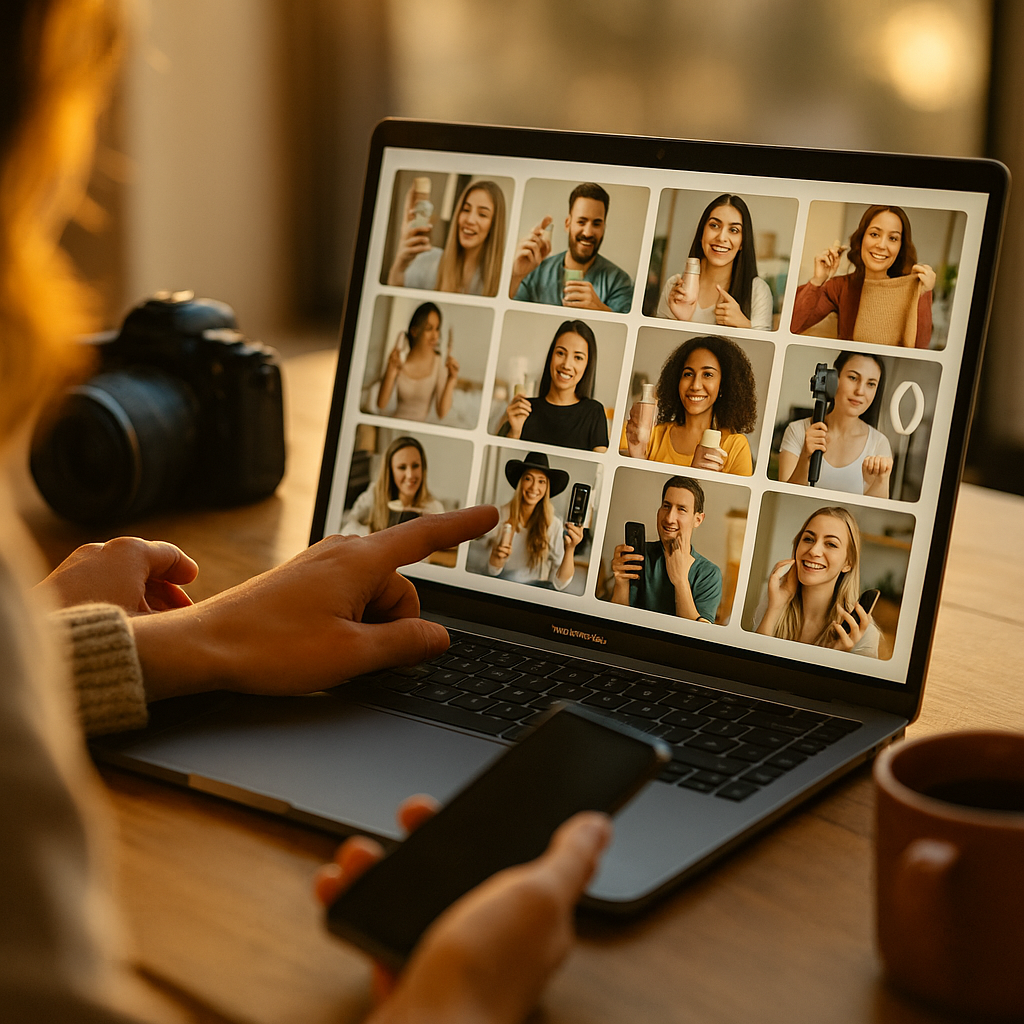Building influencer content libraries for your brand is a strategic move that can radically improve your marketing effectiveness. When done right, these libraries give your team high-impact, authentic assets that drive engagement and trust. Wondering how to build and leverage an influencer content library for maximum brand results? Read on for the ultimate guide to this powerful marketing resource.
Why Influencer Content Libraries Matter for Brand Growth
In today’s digital landscape, authenticity shapes consumer trust. Influencer content libraries give brands a robust collection of high-impact, user-generated assets—photos, videos, reviews, and stories—from credible sources. Leveraging these libraries not only streamlines creative production but also boosts ROI and campaign agility. Recent data indicates that 76% of brands consider influencer-generated content more successful than in-house branded content.
Without a dedicated influencer content library, brands risk relying on scattered, inconsistent assets, missing out on opportunities for timely, relevant campaigns. Building a centralized resource bridges this gap and empowers marketers to deliver fresh, relatable content across every touchpoint.
Key Steps to Building a High-Value Influencer Media Library
Constructing an effective influencer media library requires a methodical, EEAT-driven approach. Start with clear goals: Do you want to fuel social media campaigns, amplify product launches, or update website visuals? Next, identify creators whose style and audience closely match your brand values.
- Set Creative Briefs: Provide influencers with guidelines, mood boards, and content formats to ensure consistency and authenticity.
- Use Rights Management Contracts: Secure content ownership or usage rights through transparent agreements.
- Leverage Collaboration Tools: Use platforms for secure file transfer, feedback, and centralized asset storage.
- Organize & Tag Content: Store assets with metadata for easy retrieval by campaign, creator, or theme.
This process protects your brand, maximizes creator relationships, and ensures future-proof content architecture for easy reuse and repurposing.
Integrating Influencer Creative Into Your Brand Content Strategy
Having an influencer visual asset vault is only valuable if deployed thoughtfully. Integrate influencer content at every stage of your buyer journey—consider using authentic testimonials on product pages, creator videos in email campaigns, and real-life images to power ads. According to a 2025 Content Marketing Institute report, brands that consistently use influencer-generated material see a 24% increase in engagement rates versus traditional content alone.
Build cross-channel synergy by aligning influencer content themes with your campaign calendar. Consider “always-on” influencer partnerships to refresh your content pipeline, keeping your brand narrative dynamic and tailored for seasonal promotions, product drops, and community engagement.
Best Practices for Managing and Scaling Your Influencer Asset Library
Scalability and organization are crucial as your influencer asset pool grows. Maintain proper tagging and file structuring for easy search and retrieval. Use digital asset management (DAM) software to catalog by format, campaign, creator, and usage rights. Assign a dedicated asset manager or team to maintain quality control and campaign alignment.
Ensure legal compliance by tracking content licensing and creator contracts. Periodically audit your library for relevancy—retire outdated assets and spotlight high performers to inform future collaborations. Foster an open feedback loop with creators, encouraging innovation aligned with evolving brand standards.
Measuring the Impact of Your Influencer Content Library
Analytics validate your investment. Track how influencer content performs across touchpoints using UTM tags and engagement dashboards. Measure click-through rates, conversion uplift, and audience sentiment. According to a 2025 HubSpot study, brands using structured influencer content libraries achieve an average of 33% faster campaign turnaround and 29% higher social share rates.
Continually refine your library strategy based on data. Collaborate with marketing and sales to identify which content types and creators drive results. Share insights company-wide to enhance future briefs, partnerships, and content curation efforts.
Common Challenges and How to Overcome Them in Influencer Content Management
Brands often face hurdles like inconsistent file formats, unclear usage rights, and lack of visibility across content assets. To overcome these barriers:
- Standardize asset specifications in briefs and contracts from the outset.
- Centralize storage in secure, cloud-based systems accessible to all relevant teams.
- Train staff in copyright, attribution, and influencer relations to minimize legal and reputational risk.
- Regularly review analytics to identify gaps or high-performing trends in your library.
Anticipating and proactively addressing these challenges ensures your influencer content library remains a strategic advantage, not a logistical headache.
FAQs: Building and Using Influencer Content Libraries
-
What is an influencer content library?
An influencer content library is a curated digital collection of photos, videos, testimonials, and branded assets created by social media influencers, organized for brand marketing use.
-
Why does my brand need an influencer asset library?
It provides authentic, relatable creative assets that can boost engagement, streamline content workflows, and keep your brand marketing agile and fresh.
-
How do we manage content rights with influencers?
Always establish clear agreements on usage rights, duration, and attribution before content creation to avoid legal risks and build trust.
-
What’s the best way to organize influencer content?
Use digital asset management tools, tag assets by campaign, creator, and content type, and maintain an up-to-date inventory for quick access and compliance.
-
How is influencer content performance measured?
Track key metrics such as engagement rate, conversion rate, and shares. Use analytics platforms for real-time performance insights across channels.
Building influencer content libraries for your brand can revolutionize your marketing strategy by delivering authentic, scalable assets that fuel engagement and brand growth. By following best practices and maintaining strategic oversight, you’ll maximize the value of every influencer partnership—and keep your brand’s creative pipeline future-ready.
